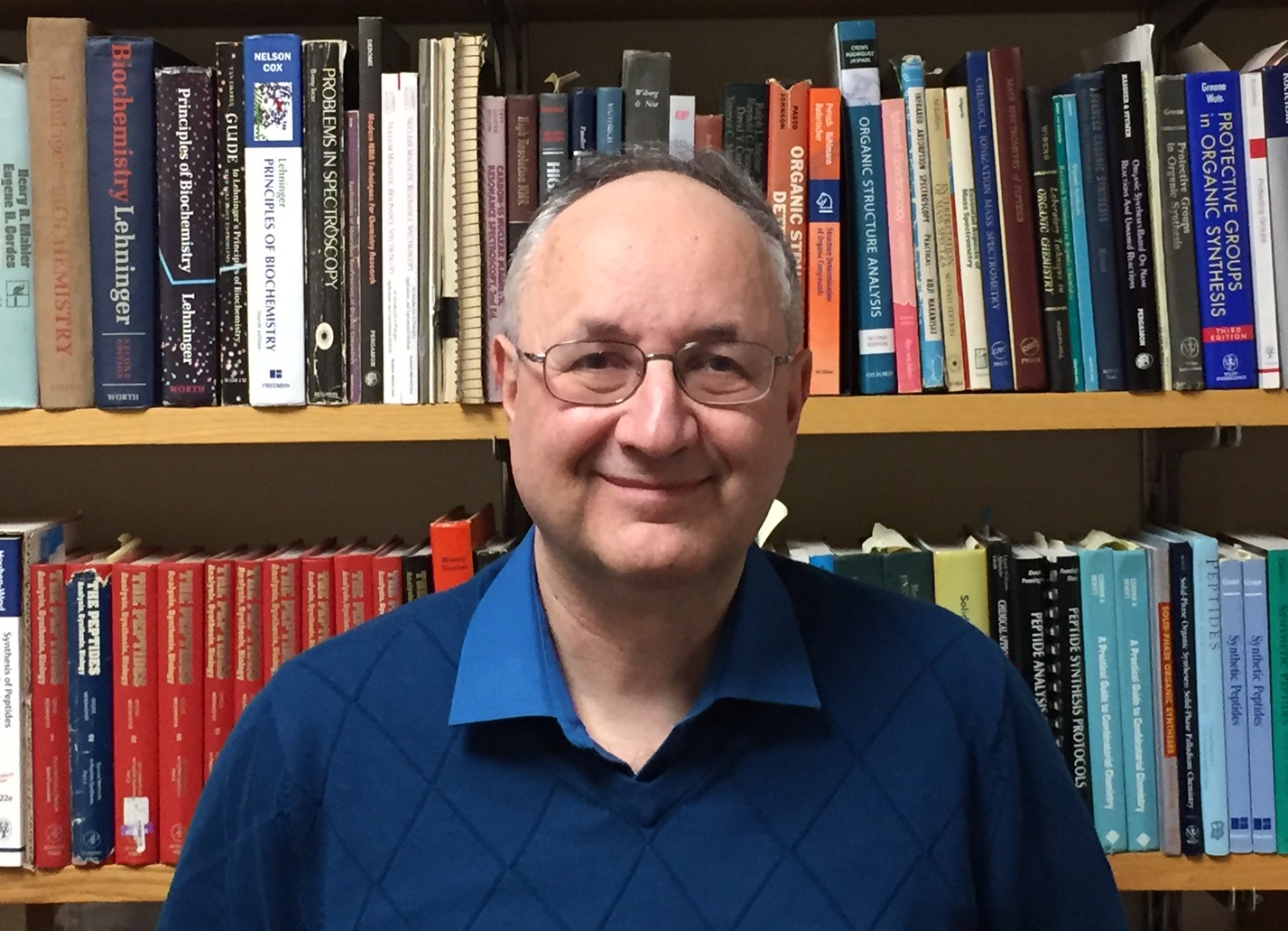

Main navigation | Main content
 Our research group is interested in developing new mild chemical methods for
the synthesis of peptides and small proteins, and applying these methods to solve
interesting and challenging biological problems. Our comprehensive approach involves
a reexamination and overhaul of protecting group combinations, cleavage conditions,
anchoring linkages, and polymeric supports in solid-phase methodologies. Several
of the reagents and procedures that we have developed are being used in laboratories
throughout the world; notable examples are the "PAL," "XAL," and "BAL" linkers, and the PEG-PS and CLEAR family of supports.
Our research group is interested in developing new mild chemical methods for
the synthesis of peptides and small proteins, and applying these methods to solve
interesting and challenging biological problems. Our comprehensive approach involves
a reexamination and overhaul of protecting group combinations, cleavage conditions,
anchoring linkages, and polymeric supports in solid-phase methodologies. Several
of the reagents and procedures that we have developed are being used in laboratories
throughout the world; notable examples are the "PAL," "XAL," and "BAL" linkers, and the PEG-PS and CLEAR family of supports.
Given the exquisite degree of control afforded by orthogonal strategies that exploit such gentle bond-breaking processes as thiolysis, fluoridolysis, and photolysis, the members of our group are well equipped to synthesize an array of challenging, structurally complex target molecules taken from the biological arena. These include peptides with multiple disulfide bridges; glyco-; phospho-, and sulfo-peptides; head-to-tail cyclic peptides; and the small protein bovine pancreatic trypsin inhibitor (BPTI). Topics of current interest include dynamics and mechanisms of protein folding; generation of encoded combinatorial libraries of peptides and non-peptide structures; mapping of protein domains involved in signal transduction; understanding the role of sugars, phosphates, and other post-translational modifications for structure and function of peptide conjugates; and preparation of DNA and PNA arrays for detection of genetic diseases, including cancers. In addition, we continue to make fundamental contributions to organosulfur chemistry and interface this to important biology, e.g., the creation of sulfur-sulfur bridges in peptides, and sulfurization of the backbone in synthetic "anti-sense" DNA and RNA.
"Problems worthy of attack prove their worth by attacking back," and in this regard students in our research group explore new aspects spanning the range of synthetic organic chemistry as it interfaces with biology. They become skilled in various state-of-the-art techniques for structure determination, purification, and characterization, including daily application of high-field NMR, mass spectrometry, amino acid analysis, and high pressure liquid chromatography (HPLC). X-ray crystallography and computer modeling are further tools that play a role in some of this research.